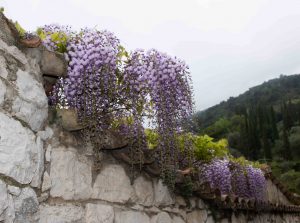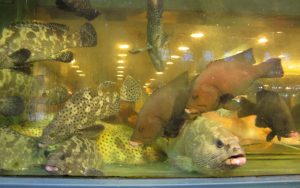The Indexing Society of Canada / Société canadienne d’indexation (ISC/SCI) is Canada’s national association of indexers.
We invite you to find an indexer for your project, read our publications, discover our conferences, events, and resources for indexers, find out about membership, and learn about the Society.
Find an indexer
Find an indexer who works in the subject area of your project.
Find resources
Find information about indexes, indexing practices, and training in indexing.
Attend an event
Attend a local meeting of indexers or attend the annual conference.
Become a member
Join the Society and enjoy the benefits of membership.
Featured Post
What practices will help me with good index term selection?
The scent of information
JoAnne Burek
 Have you heard of a rule in web design called the three-click rule? It states that users will leave your web page or app if they can’t find what they want in three clicks. However, the rule has been challenged by numerous studies. It turns out that users don’t actually stop searching after three clicks, as long as the navigation is easy and there is a constant “scent of information.”
Have you heard of a rule in web design called the three-click rule? It states that users will leave your web page or app if they can’t find what they want in three clicks. However, the rule has been challenged by numerous studies. It turns out that users don’t actually stop searching after three clicks, as long as the navigation is easy and there is a constant “scent of information.”
Users of on-line Hansard databases have no choice but to keep clicking when they’re searching for something that was said in parliament. They can’t just throw up their arms in frustration and look somewhere else—because there is no other source of information.
Hansard team members Julie McClung and Michael Sinclair will show us how they keep users happy at the BC Government when they present “Digital Innovation and Parliamentary Indexing” at the ISC/SCI conference in Winnipeg June 8-9.
If you still haven’t registered, you can still get the Early Bird Pricing until end of day Friday.
Indexing Society of Canada unveils new friendlier website
Indexing Society of Canada
April 19, 2018
The Indexing Society of Canada / Société canadienne d’indexation (ISC/SCI) is announcing the launch of its redesigned website indexers.ca. The new design provides more functionality, friendlier navigation, and improved readibility for visitors on desktops and mobile devices.
The Register of Indexers Available (“Find an Indexer” page) was completely rewritten. Visitors in need of an indexer can search by subject area or a keyword. Searches can also be made for specialization in types of materials (such as databases, multimedia) and related information skills (for example abstracting, thesaurus construction).
Visitors looking for information on indexing courses, tools, and practices will have an easier time finding what they need with the expanded layout.
For greater engagement with the community, we added a calendar to announce our local meetings and annual national conference.
Visit indexers.ca today and consider telling us what you think by sending us an email or posting a comment on our Facebook page.
About the Indexing Society of Canada / Société canadienne d’indexation
The ISC/SCI is Canada’s national association of indexers. Founded in 1977 as the Indexing and Abstracting Society of Canada / Société canadienne pour l’analyse de documents (IASC/SCAD), its mission is to encourage the production and use of indexes, promote the recognition of indexers, improve indexing techniques, and provide a means of communication among individual indexers across Canada. ISC/SCI is affiliated with indexing societies around the world through an international agreement. Learn more at indexers.ca
ISC/SCI Unveils 2018 Conference Program | Early Bird Pricing Closes Soon
Indexing Society of Canada
 The complete program of speakers and sessions for the 2018 conference in Winnipeg is now available on this website.
The complete program of speakers and sessions for the 2018 conference in Winnipeg is now available on this website.
View and download the details on two phenomenal days of sessions plus the Thursday evening pre-conference event and the Sunday morning workshop.
Last week, we announced the Sunday morning workshop. You can register for this event here.
As a reminder, the Early Bird Pricing ends April 27. Receive your discounted price by registering for the conference today.
Post-Conference Sunday: Embedded indexing
Indexing Society of Canada

The client wants an index for a printed book and an eBook. You’ve heard about embedding indexes, but you haven’t attempted one yourself. The client won’t pay you to learn on the job. So, do you bid or not?
If fear and uncertainty is holding you back from bidding on these projects, then you’ll want to attend the post-conference Sunday morning workshop “Indexing for Multiple Outputs” presented by Cheryl Landes.
Cheryl will talk about the differences between embedded and traditional back of the book indexing and how to tag content for multiple outputs. You’ll take away strategies for planning the index, working with the publisher (they all have their unique ways), and tagging entries to make the publisher happy. And of course there will be live demos and practice exercises.
It all happens on Sunday, June 10 in Winnipeg in the Fort Garry Hotel.
Learn more about the workshop or go register now on Eventbrite.
New ideas where you weren’t looking
JoAnne Burek
 I tell my writer friends that a good way to find new ideas is to read a scholarly book that’s not quite in their field.
I tell my writer friends that a good way to find new ideas is to read a scholarly book that’s not quite in their field.
As an indexer of such books, I’ve been surprised to find new insights several times. For instance, in Collaborative Consultation in Mental Health, I learned about a proven process for mentoring. In Food Sovereignty, Agroecology, and Biocultural Diversity, I read a riveting story about a company that was struggling with cultural differences.
In a scholarly book that you wouldn’t normally choose to read, there are gems of knowledge that you would never know were there. And only an indexer would know that.
Mary Newberry and Judy Dunlop have been joyfully indexing scholarly books for years. Join us as they share their experiences in a joint presentation in Winnipeg, June 8 and 9.
JoAnne Burek
